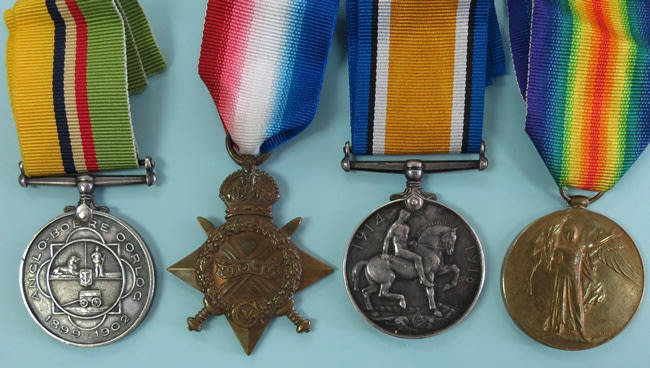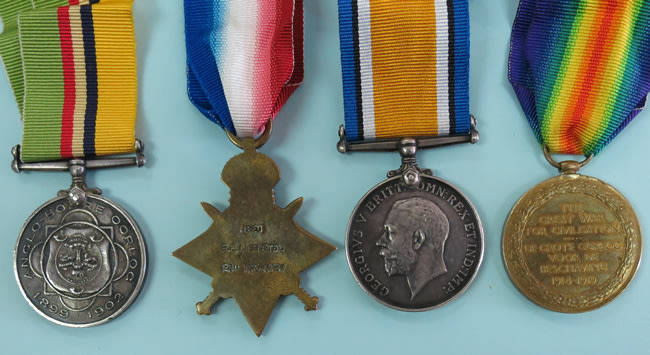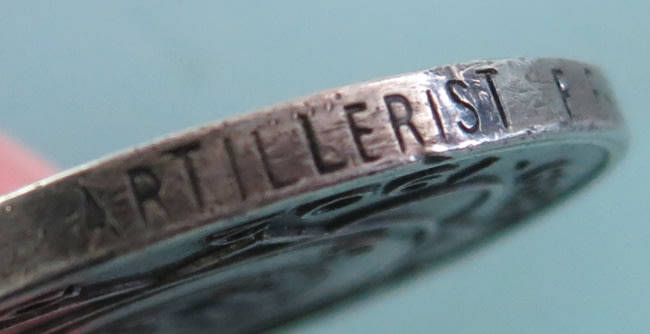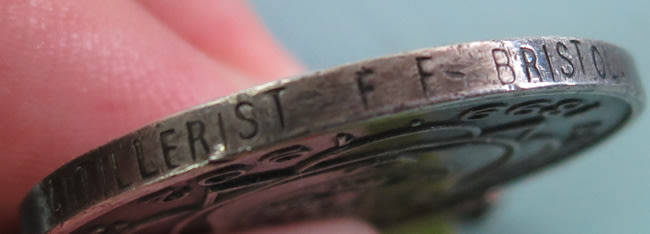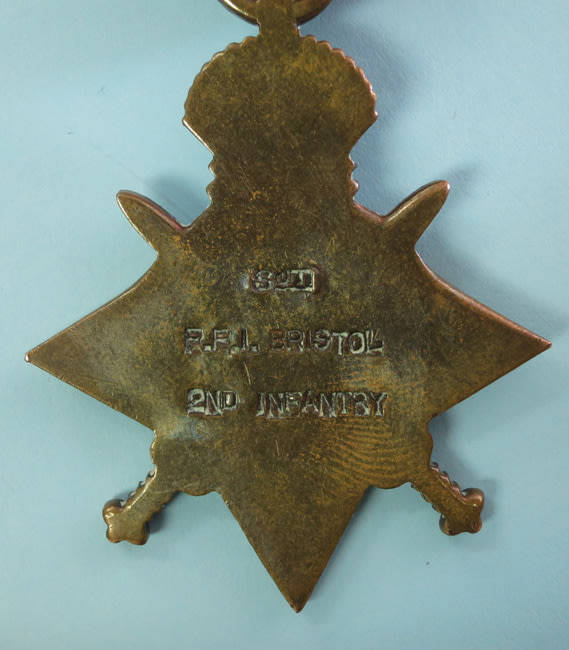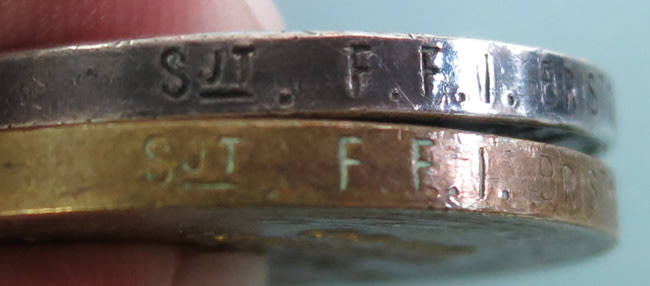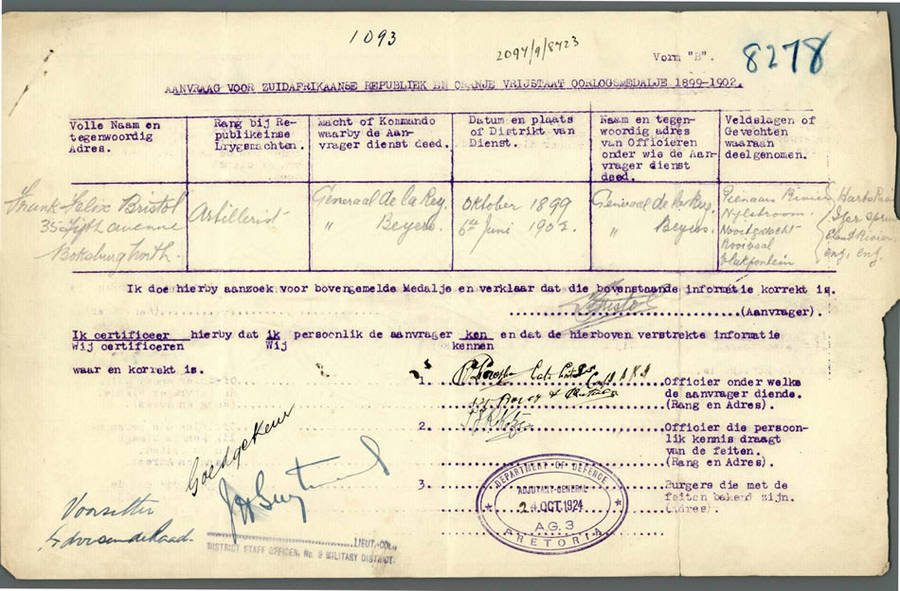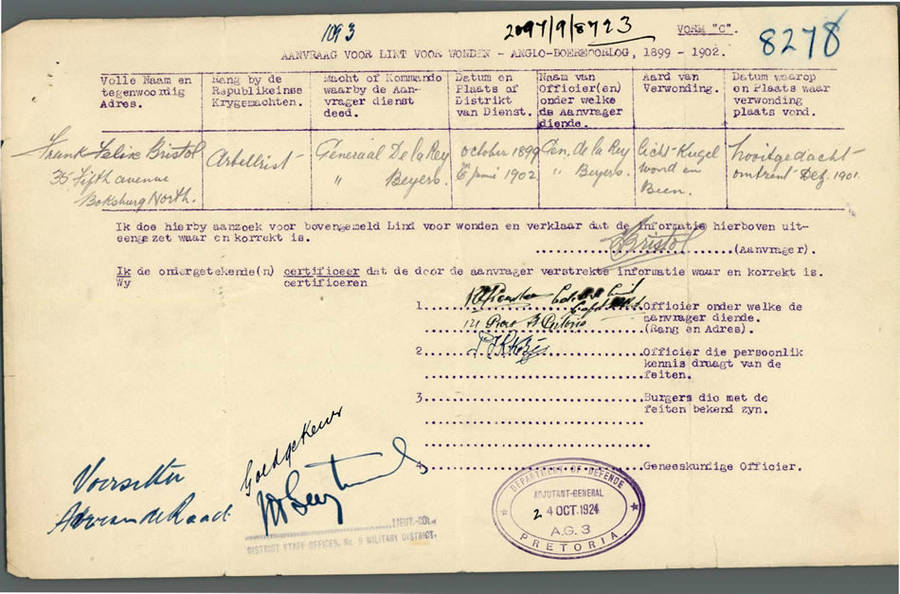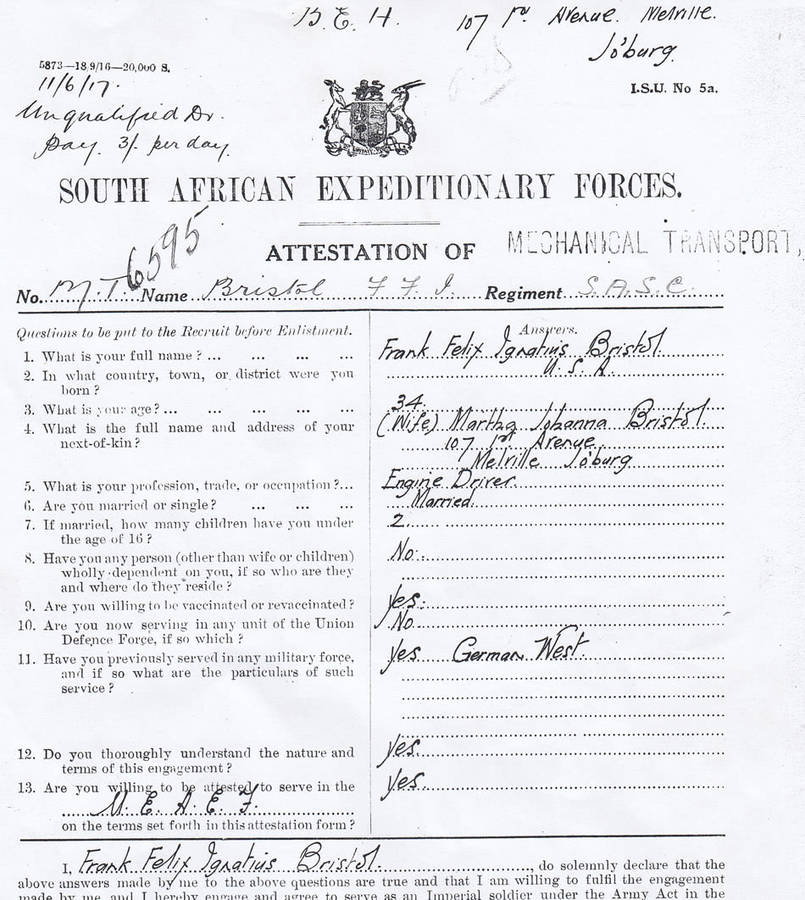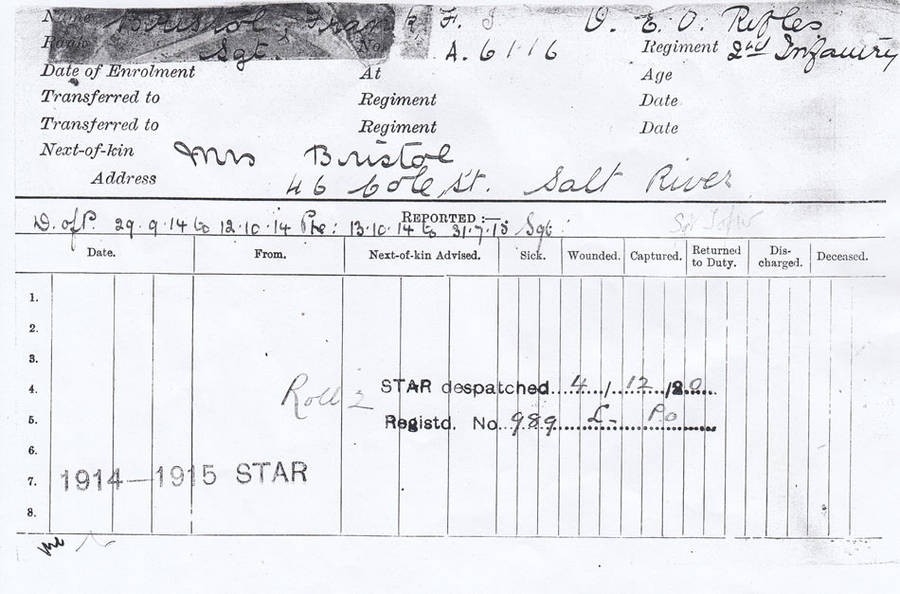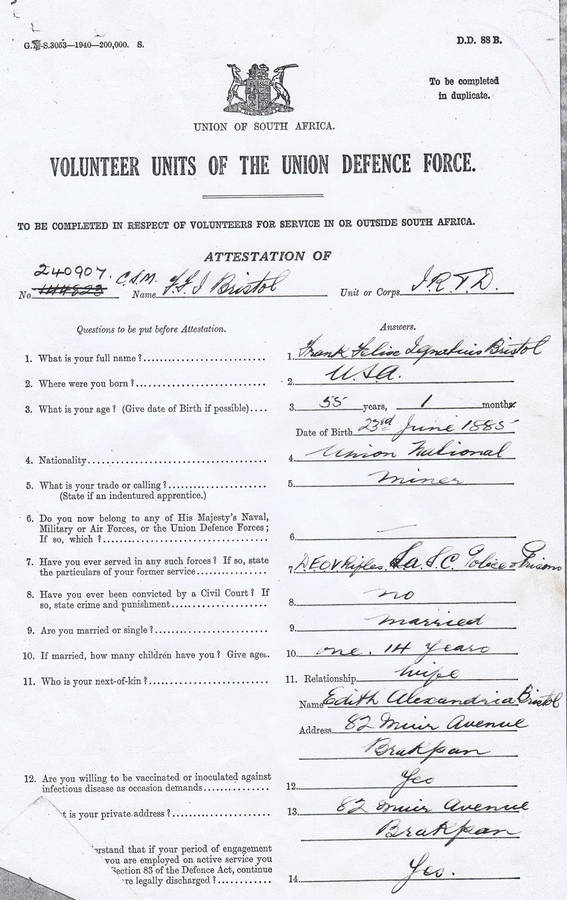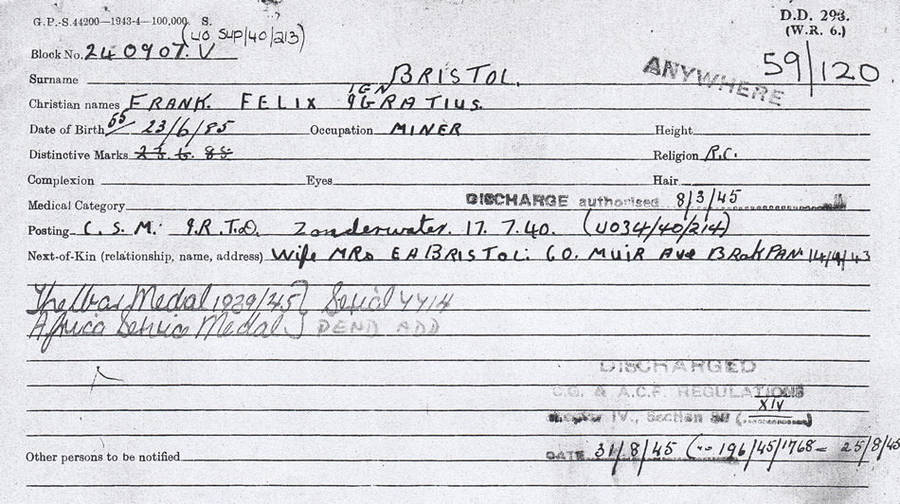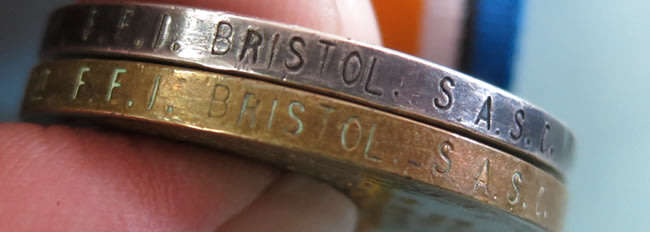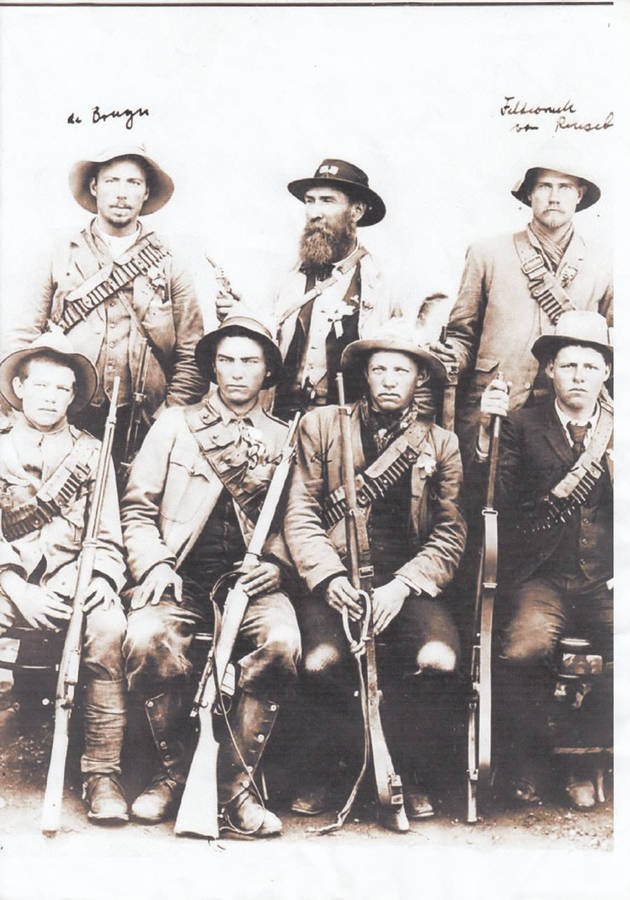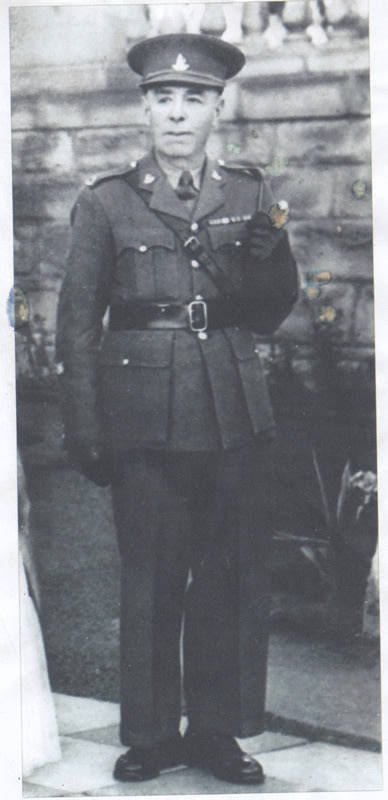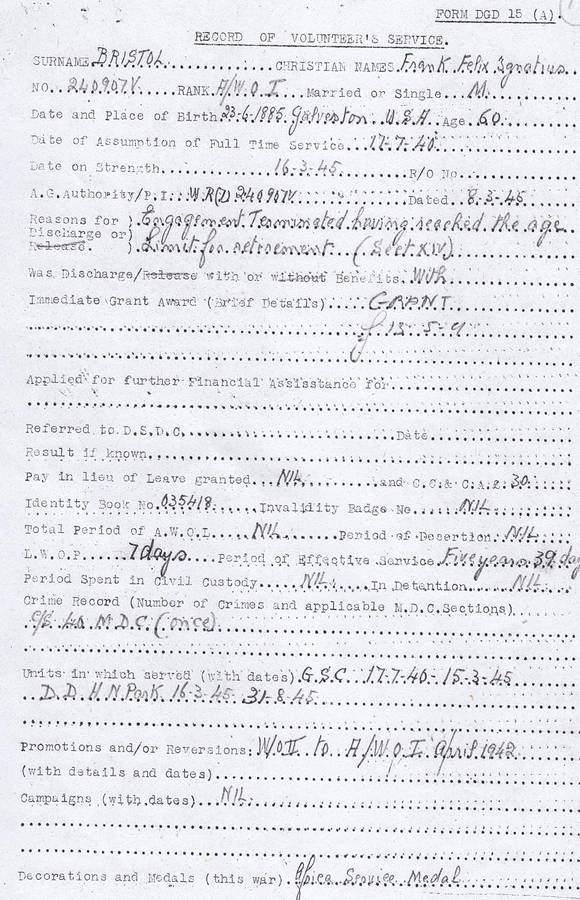Boer War ABO (LVW) / WW1 Group to an American
Recipient: Frank Felix Bristol
Medal group consists of the:
- Anglo-Boere Oorlog Medal named to: ARTILLERIST F.F. BRISTOL
Also entitled to Lint Voor Wonden (Wound Ribbon)
- 1914-15 Star is named to SJT F.F.I. BRISTOL 2ND INFANTRY
- British War Medal 1914-1918 is named to SJT F.F.I. BRISTOL S.A.S.C.
- Victory Medal is named to SJT F.F.I. BRISTOL S.A.S.C.
There are also some documents that were obtained by a family member who researched Frank Bristol.
Documents include correspondence with The Anglo-boer War Museum in Bloemfontein, copies of the ABO medal application Vorm "B" and Lint Voor Wonden (Wound Ribbon) application Vorm "C", copies of some of his WW1 service record and WW2 service record.
Also computer print copies of some photos.
I am not a researcher, but the following are some interesting facts about Frank Bristol that I got from the documents:
He was born on 23/06/1885 in Galveston, Texas, USA.
The following is from correspondence with the Anglo-Boer War Museum in Bloemfontein:
"Bristol is mentioned in a short memoir by Jan Brand Wessels.
Wessels knew Boy Bristol and fought with him at the Battle of Graspan in mid-1901 in the Orange Free State.
According to Wessels, Bristol came to South Africa with a circus and ran away to join the Boer forces.
He was Captain Thuynsma's agterryer.
Thuynsma, an outstanding man, was both a captain in the ZAR Artillery and General De La Rey's Chief Of Scouts.
Thuynsma (and Bristol) scouted for General De La Rey when he came into the Orange Free State to Vrede to discuss matters with the two Boer governments and military leaders.
On their way back to the Transvaal De La Rey's small commando was caught up in a vicious and bloody skirmish at Graspan in about July 1901.
Unfortunately Captain Thuynsma was killed there.
Having lost his officer Bristol may been at a loss as what to do.
It may be then that he went up to the Northern Transvaal to join General Beyers' artillery."
According to Vorm "B" and Vorm "C" Bristol was in the units "Generaal de La Rey" and "Generaal Beyers".
According to vorm "B" he saw fighting at Pienaars Rivier, Nylstroom, Nooitgedacht, Rooivaal, Vlakfontein, Hartsrivier and Elands Rivier.
According to Vorm "C" he sustained a light bullet wound in the leg at Nooitgedacht in 1901.
14 August 1902 he joined the SA Constabulary as a corporal earning a wage of 4 shillings a day.
In WW1 it looks like he was in the 2nd Infantry (Duke of Edinburgh's Own Rifles) and took part in in the German SWA campaign.
In 1917 he joined the S.A.S.C. (Mechanical Transport) Regiment as an engine driver. (Reg. No. MT6595)
On 30/09/1918 he was approved for appointment to Police And Prisons in Dar Es Salaam, Tanganayika.
In 1940, at the age of 55, he volunteered for service. (No. 240907V)
First posting was at Zonderwater Camp.
In 1941 it looks like he was a C.S.M. (Sergeant Major) in the 14th M.T. Coy., Cape Corps based in Kimberley.
In 1943 a unit C.C.T.C. Kimberley is mentioned.
A unit C.A.T.D. Pretoria is also mentioned.
He was discharged on 31/08/1945 at the age of 60.
His rank on discharge was either a A/WO1 or WO2.
He was also entitled to the Africa Service Medal and the War Medal 1939-45.
These are missing from the group unfortunately.
More photos in photo box on top left.
Just click.
